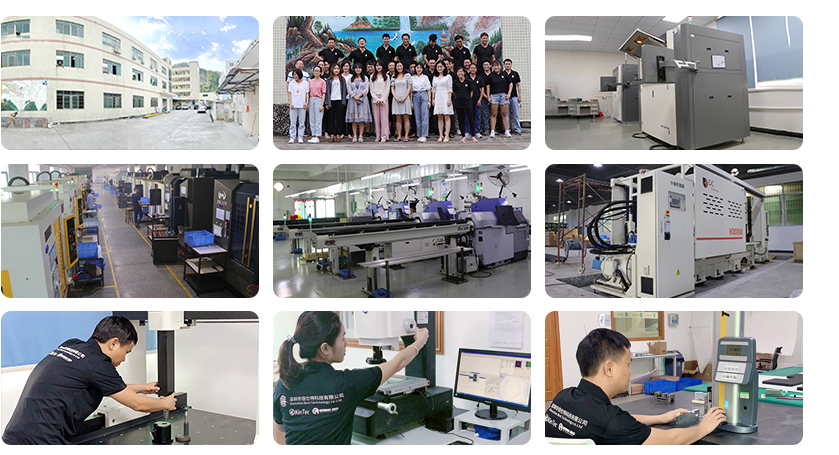Home > Product
Prototype Injection Molding Parts
- Plastic Injection
- Plastic parts manufacturing
- Rapid Prototype
- Injection Molding
- Product description:Accelerate your product development with our rapid prototype injection molding services. We specialize in high-quality parts production, offering fast and precise injection molding to bring your proto
Injection molding is a foundational process in modern manufacturing, particularly for producing plastic shell parts used across various industries. This article delves into the intricacies of injection molding, highlighting key aspects such as production processes, materials selection, cost considerations, advantages, market dynamics, and other critical factors essential to understanding this versatile manufacturing method.
Production Processes
Injection molding involves several sequential steps, each crucial for achieving high-quality plastic shell parts:
1. Design: The process begins with designing the part using CAD software, considering functional requirements, aesthetics, and manufacturability.
2. Tooling: A mold (typically made of steel or aluminum) is fabricated to precise specifications. The mold consists of two halves, the cavity and the core, which together form the shape of the part.
3. Injection: Molten plastic material (in the form of pellets) is heated and injected into the mold under high pressure. This fills the cavity and takes the shape of the mold.
4. Cooling: The mold is cooled to solidify the plastic into the desired shape. Cooling time is critical to ensure proper material properties and dimensional accuracy.
5. Ejection: Once cooled, the mold opens, and the part is ejected either manually or using automated methods.
6. Post-Processing: Parts may undergo additional processes such as trimming, machining, or surface finishing to meet final specifications.

Materials Selection
Selecting the right material is paramount to the performance and durability of plastic shell parts. Commonly used materials in injection molding include:
- ABS (Acrylonitrile Butadiene Styrene): Known for its impact resistance and strength, suitable for a wide range of applications including automotive, consumer goods, and electronics.
- Polycarbonate: Offers excellent transparency, impact resistance, and heat resistance, making it ideal for parts requiring clarity or exposure to high temperatures.
- Nylon: Provides high strength, toughness, and abrasion resistance, suitable for mechanical parts such as gears and bearings.
Cost Considerations
The cost of injection molding is influenced by various factors:
- Tooling Costs: Initial investment in molds can be significant but amortized over large production runs.
- Material Costs: Prices vary based on material type, quality, and quantity purchased.
- Production Volume: Economies of scale apply, with higher volumes typically reducing per-unit costs due to optimized cycle times and material usage.
- Labor and Overhead: Operational expenses include labor costs, facility overhead, maintenance, and energy consumption.
Advantages of Injection Molding
Injection molding offers several advantages over other manufacturing processes:
- High Precision: Capable of producing complex geometries with tight tolerances.
- Efficiency: Rapid production cycles with minimal material waste.
- Versatility: Accommodates a wide range of materials and part sizes, from small components to large enclosures.
- Scalability: Easily scales from prototype to high-volume production, ensuring consistency and quality across batches.
Market Conditions and Trends
The market for injection molded plastic parts is influenced by global economic conditions, technological advancements, and industry-specific trends:
- Technological Advancements: Integration of IoT (Internet of Things) and automation drives demand for precise and durable plastic components.
- Sustainability: Increasing focus on eco-friendly materials and processes to reduce environmental impact and meet regulatory requirements.
- Customization: Growing demand for customized solutions tailored to specific applications in industries such as automotive, medical devices, and consumer electronics.
Conclusion
Injection molding remains a cornerstone of modern manufacturing, offering unmatched precision, efficiency, and scalability for producing plastic shell parts. By understanding the intricacies of the process, selecting appropriate materials, optimizing costs, and staying abreast of market trends, manufacturers can capitalize on opportunities in diverse industries. As technology evolves and market demands shift, injection molding continues to play a pivotal role in shaping the future of plastic component production worldwide
Finishing Services
Our engineers are experts in achieving the perfect finish for your product. With painting, vapor polishing, sanding, anodizing and many other services to choose from, you can create the exact look you want.
Anodizing, Painting, Pad Printing, Color Matching, Sanding and Polishing, Vapor Polishing, Blasting
CNC Machining Center

Categories
Latest News
- How can Chinese CNC machining 2025-04-22
- Why CNC Machining is the Best 2024-08-23
- CNC Machining Cost Calculation2024-08-22
- How to Find a Manufacturer for2024-08-01
- Plastic molding: definition, p2024-07-10
Contact
CONTACT USContact:Joy Ren
Phone: +86 18598031605
Email:cillian@qc-mold.com
Whatsapp+86 18598031605
Add:No.3 Huayuan Road, Longhua District,Shenzhen,China







 Eva
Eva